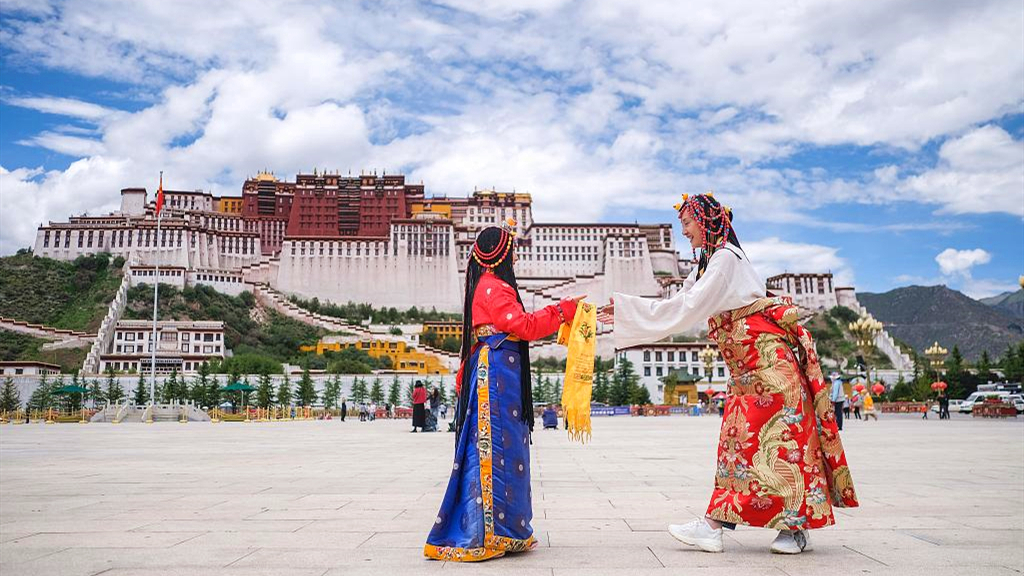1. How’s the climate in Tibet? Is it hot Web Job Posting in summer? Is it freezing in wintry weather?
Tibet is a high plateau, and it belongs to typical downy unique weather. Climates are quite different in specific regions of Tibet. The gap Tibet which is at a lower elevation, is warmer than western Tibet. In a few mountain regions, there are four seasons at an identical time in distinctive altitude. The climate in an afternoon varies significantly, too. The night is bloodless even as the day heats. It spans 12-15 ranges centigrade in an unmarried day.
The climate in southeastern Tibet, which includes Nyingchi and Chamdo, is balmy with a mean temperature of 8 ranges centigrade; even as in western Tibet (Shigatse and Nagqu) is pretty cold with a median temperature below zero degrees. However, within the relevant region of Tibet, the climate of Lhasa and Tsedang is greater favorable for touring. Travelers can go to these two regions all 12 months round, not too hot in summer and now not too cold in wintry weather.
2. How is the street circumstance in the rainy season in Tibet? Need I take any rainproof with me?
The wet season in Tibet is mainly from June to August, and it does have a terrible impact on the roads. However, there are numerous tune maintenance employees, and the local navy would additionally supply help to restore the streets. Generally speaking, it best takes some hours to make the roads feasible again. As for the rainproof, you are recommended to take a raincoat, rain-evidence trousers, and footwear if you need to trek, climb the mountain or ride a motorbike.
If you’ve got group excursions prepared via some travel businesses, generally, you do not want to take rainproof with you. Tibet frequently rains at night time, and the climate is pretty suitable within the daylight hours. Besides, the traveler bus is usually alongside you.

3. What is the excellent time to journey to Tibet?
Generally speaking, early April is the start of journey season, which lasts to mid-June while a massively wide variety of Chinese travelers rush to Tibet for summertime excursions. Late June to the quit of National Holiday is the peak journey season when a few critical fairs are held in Tibet, like Shoton Festival, Gyantse Dawa Festival, and Nagqu horse using Festival. After mid-October, Tibet turns to iciness, and as the site visitors reduce significantly, more than 1/2 of resorts are closed for the poor reservation. As for the pleasant time to journey, it relies upon in your travel requirement.
1. If you want an incredibly affordable charge, visit Tibet in winter, from December to March. All the things are pretty reasonably priced; even the visitor websites offer a 30-50% bargain on the entrance price. Hotels are reasonably priced, too. You can enjoy five big-name resorts with much less than 100USD inclusive of breakfast. Compared with touring in August, the cost of an iciness excursion is most straightforward 50%-60% of a summer tour. Because of the low traffic, the Potala Palace lets you spend even an entire day in it. Besides, the priests aren’t busy and feature spare time to talk with you.
2. If you want hiking, do it in May or September when the monsoon will in no way hassle you and the weather are balmy and first-rate.
3. If you adore Mt.Everest and want to look at the clean face, attempt to keep away from the rainfall season and foggy weather.
4. If you adore to go to the grassland in north Tibet, do the tour in July when the plant life blooms in good-sized plain and businesses of yak and sheep, Tibetan nomad tents unfold everywhere in the grassland.
READ MORE :
5. Those who need to pressure Tibet via the Sichuan-Tibet toll road must keep away from the wet season. There will be mudslides, cave-ins, and more on positive sections of the street, blocking off the passage of vehicles.
About high altitude illness
1. What is high altitude illness? What’s the symptom of excessive altitude sickness?
High altitude sickness may also occur at excessive altitudes (over 2700m) because of the decreasing oxygen availability. It commonly happens following a fast ascent and can usually be avoided by way of ascending slowly. Symptoms often show up six to ten hours after the climb and typically subside in one to two days. However, they occasionally become more excellent serious situations. Common symptoms of high altitude illness consist of shortness of breath, headache, fatigue, belly illness, dizziness, and sleep disturbance.
2. How to keep away from or relieve high altitude sickness?
Keep a perfect mood, do not be too excited or worry about approximately high altitude sickness. Before visiting Tibet, get as wholesome as feasible, each physically and psychologically. Take care of yourself and keep away from catching a cold earlier than going to Tibet. Not to take bathe at the primary days once you are in Lhasa to keep away from being bloodless, or you will easily suffer from altitude illness beneath weak physical condition. Do not drink any alcohol on the first two days while you are in Tibet. Drink masses of water and devour light, excessive carbohydrate food for extra strength. Do not run, soar or perform little taxing jobs in the first days. Being peaceful and having a fantastic rest is critical.
Once you have the symptoms of altitude sickness, take some medicine (it’s far stated that it is beneficial to have a few butter tea if you could adapt to its flavor) and do not go better. Medication and oxygen also assist in preventing altitude illness. Mild altitude illness symptoms can be handled with the proper medicinal drug. If medicine and oxygen do not relieve the signs and symptoms, visit a medical institution or evacuate to a certain altitude without delay!






